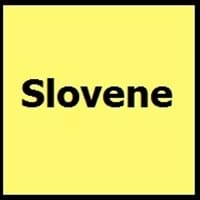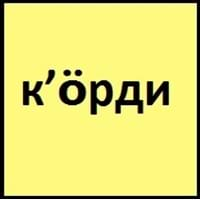Slovene and Kurdish
Countries
European Union, Slovenia
Iraq, Kurdistan
National Language
Austria, Croatia, Hungary, Italy, Slovenia
Azerbaijan, Georgia, Iran, Iraq, Syria, Turkey
Second Language
Not spoken in any of the countries
Not spoken in any of the countries
Speaking Continents
Europe
Middle East
Minority Language
Austria, Hungary, Italy
Not spoken in any of the countries
Regulated By
Slovenian Academy of Sciences and Arts
Not Available
Interesting Facts
- The Freising Monuments is the oldest preserved records of written Slovene from 10th century.
- The first Slovene book was printed in 1550.
- The vocabulary in Kurdish is of Iranian origin.
- In the middle East, Kurdish is the fourth largest ethnic group.
Similar To
Serbo-Croatian
Farsi Language
Derived From
Not Available
Not Available
Alphabets in
Slovene-Alphabets.jpg#200
Kurdish-Alphabets.jpg#200
Scripts
Latin
Arabic, Cyrillic, Latin
Writing Direction
Left-To-Right, Horizontal
Right-To-Left, Horizontal
How Are You?
Kako se imate?
Tu çawa yî?
Good Night
Lahko noč
Şev xweş
Good Evening
Dober večer
Evare baş
Good Afternoon
Dober dan
Nee-wa-rowt bash
Good Morning
Dobro jutro
Bayanit bash
I Love You
Ljubim te
Ez te hez dikem
Excuse Me
Oprostite
Bê zehmet
Dialect 1
Prekmurje Slovene
Northern Kurdish
Where They Speak
Hungary, Slovenia
northern Iraq, northern Syria, northwest Iran, southeast Turkey
Dialect 2
Resian
Central Kurdish
Where They Speak
Italy
Iraq, Kurdistan Province of western Iran
How Many People Speak
Not Available
Dialect 3
Styrian
Southern Kurdish
Where They Speak
Slovenia
Eastern Iraq
How Many People Speak
Not Available
Speaking Population
Not Available
Native Name
Not available
Kurdí / کوردی / к’öрди
Alternative Names
Slovenian, Slovenscina
Not Available
French Name
slovène
kurde
German Name
Slowenisch
Kurdisch
Pronunciation
[slɔˈʋèːnski ˈjɛ̀ːzik], [slɔˈʋèːnʃt͡ʃina]
Not Available
Origin
972-1093
16th century CE
Language Family
Indo-European Family
Indo-European Family
Subgroup
Not Available
Indo-Iranian
Branch
Not Available
Not Available
Early Forms
No early forms
Not Available
Standard Forms
Slovene
Kurdish
Signed Forms
Not Available
Not Available
Scope
Individual
Macrolanguage
ISO 639 6
Not Available
Not Available
Glottocode
slov1268
kurd1259
Linguasphere
53-AAA-f
58-AAA-a
Language Type
Living
Living
Language Linguistic Typology
Not Available
Subject-Object-Verb
Language Morphological Typology
Fusional
Not Available
All Slovene and Kurdish Dialects
Most languages have dialects where each dialect differ from other dialect with respect to grammar and vocabulary. Here you will get to know all Slovene and Kurdish dialects. Various dialects of Slovene and Kurdish language differ in their pronunciations and words. Dialects of Slovene are spoken in different Slovene Speaking Countries whereas Kurdish Dialects are spoken in different Kurdish speaking countries. Also the number of people speaking Slovene vs Kurdish Dialects varies from few thousands to many millions. Some of the Slovene dialects include: Prekmurje Slovene, Resian. Kurdish dialects include: Northern Kurdish , Central Kurdish. Also learn about dialects in South American Languages and North American Languages.
Slovene and Kurdish Speaking population
Slovene and Kurdish speaking population is one of the factors based on which Slovene and Kurdish languages can be compared. The total count of Slovene and Kurdish Speaking population in percentage is also given. The percentage of people speaking Slovene language is Not Available whereas the percentage of people speaking Kurdish language is 0.31 %. When we compare the speaking population of any two languages we get to know which of two languages is more popular. Find more details about how many people speak Slovene and Kurdish on Slovene vs Kurdish where you will get native speakers, speaking population in percentage and native names.
Slovene and Kurdish Language Codes
Slovene and Kurdish language codes are used in those applications where using language names are tedious. Slovene and Kurdish Language Codes include all the international language codes, glottocodes and linguasphere.





